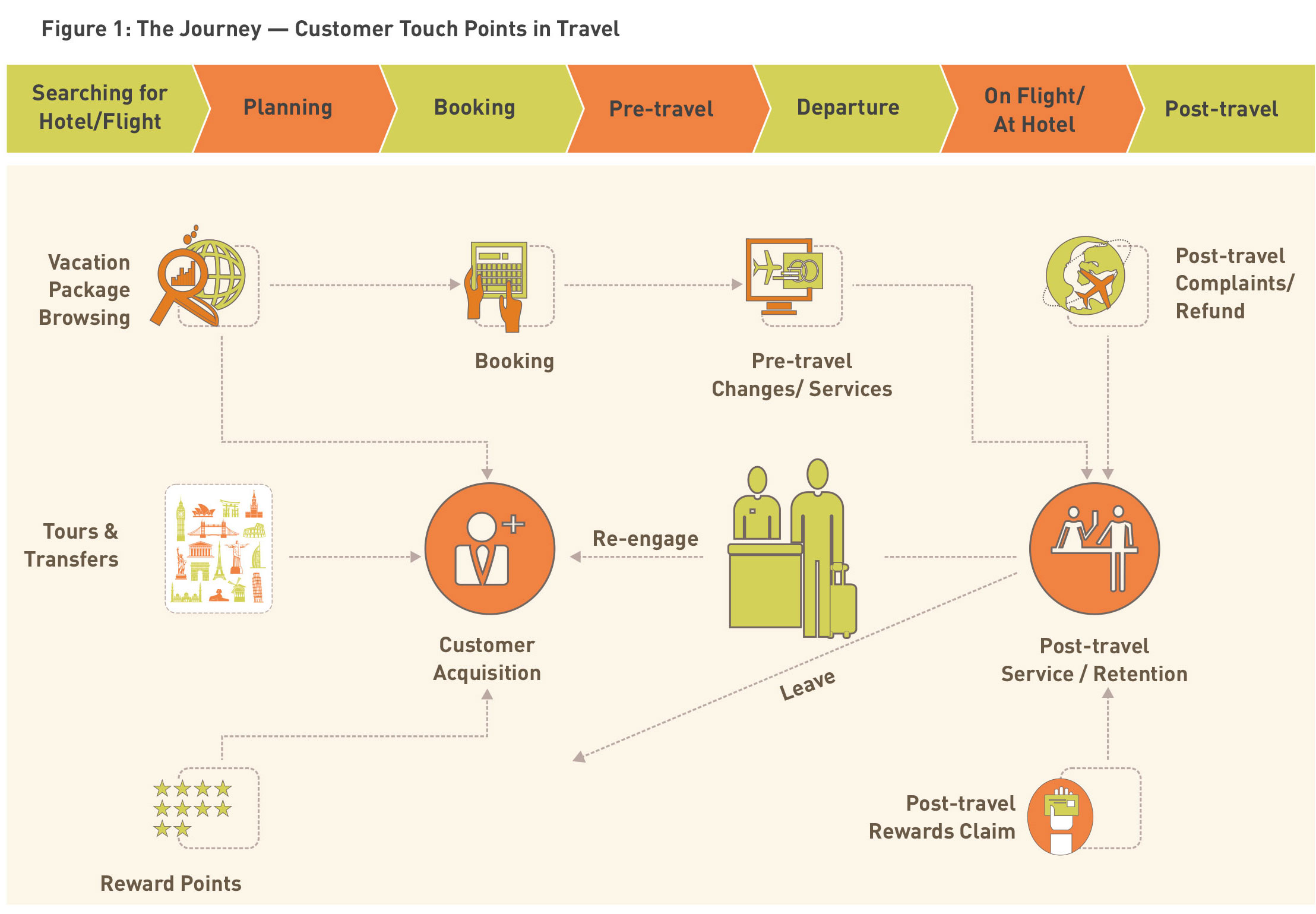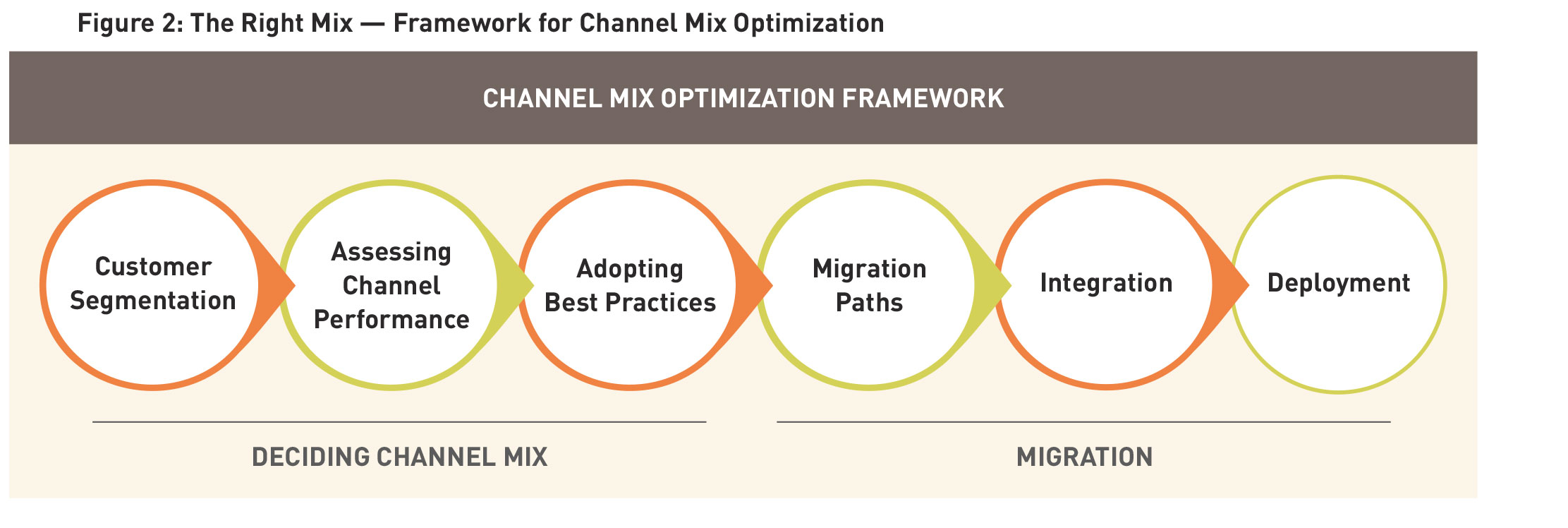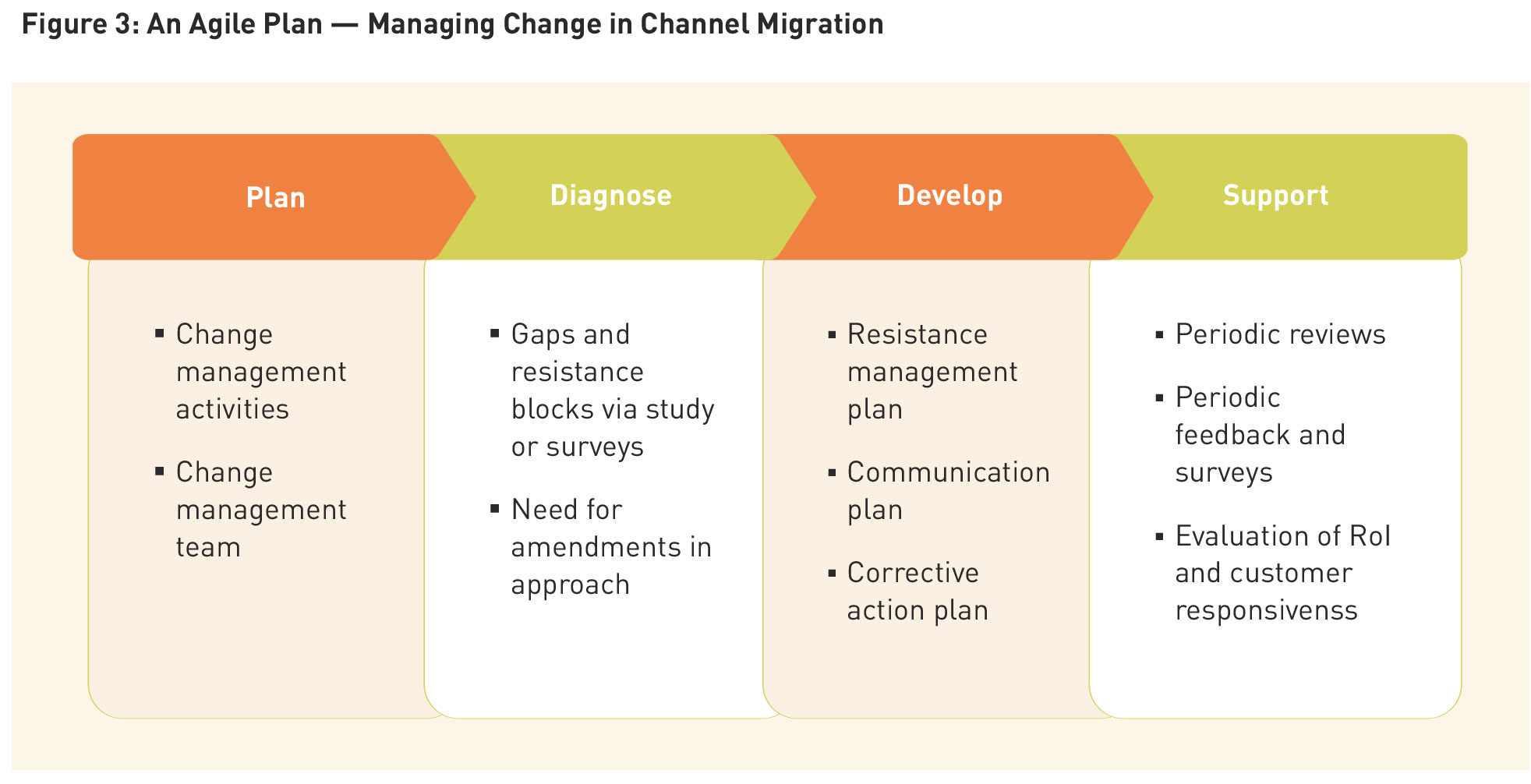Customers in today's evolving travel industry interact through multiple touch points and channels (Figure 1). Each channel varies in cost, implementation and benefits. Travel companies and airlines need a deep understanding of the various channels to create a comprehensive strategy that will simultaneously drive price elasticity, product demand, cost optimization and customer delight. In migrating customers to the channel of their choice, marketers should address cost and customer delight.

However, the challenge lies in delivering consistent excellence in customer experience across multiple touch points (sales, customer service, post sales) and channels [Global Distribution Systems (GDS), Online Travel Agencies (OTAs), devices and mobile applications] in a highly competitive market.
A comprehensive strategy and framework can enable travel players to design an effective channel mix. It will help companies design a consistent and engaging sales-to-service experience across channels and effectively manage cost-to-serve. The framework should comprise of the following key elements:
-
Cost optimization of service channels
-
Mix optimization of service channels
-
Step-wise channel migration and deployment
Case Study
Driving Targeted Campaigns with Customer Segmentation Analytics
Read More
Right Approach, Right Mix
We propose a channel mix optimization framework as shown in Figure 2 to enable travel companies to methodically design an effective channel mix and migrate customers to relevant channels. The framework comprises of two major steps.
Deciding Channel Mix
Migration
-
Migration Paths
-
Integration
-
Deployment

However, before implementing this framework, companies should look at the following three critical aspects:
1. Tap Intelligence
Airlines and hotels possess a valuable data repository. Through intelligent profiling, segmentation analysis and referral building, they can apply analytics-based insights extensively at every possible customer touch point to optimize acquisition, servicing and retention. This is a significant advantage they hold over new third parties or competitors who have limited information on customers' personal preferences and behavioral patterns.
2. Audit Channels
A deep dive analysis of costs per channel will provide a comprehensive picture of all itemized expenses (such as commission for net rates and marketing costs). By auditing every channel, companies can ensure that the most profitable business from all traffic sources is captured. It will also help compute the Return on Investment (RoI) on each channel by mapping bookers vs. lookers and bounce rate vs. page visits.
3. View Through the Customer Lens
By mapping the touch points of all channels from the perspective of customers, companies can develop an efficient multi-channel lens. For example, e-mails are still the most robust demand management channel for complaints. However, live web service and chats seem to work better for sales and marketing to reduce transaction or enrolment abandonment rates.
Now, let us take an in-depth look at the various steps in the channel mix optimization framework.
Step 1: Deciding Channel Mix
Customer segmentation, assessing channel performance and adopting best practices constitute the three activities under this step.
1. Customer Segmentation
To determine the channel mix best suited for their customers, companies should first understand their customers. They should establish an efficient and effective migration strategy that hinges on customer segmentation or profiling. The segmentation should cover the following:
-
The customer's existing and potential value
-
The number of service-related contacts (how many customers are using each existing channel)
-
The cost-to-serve for various channels
Demographic data such as age, gender and location can add further value to the segmentation exercise.
2. Assessing Channel Performance
While deliberating on the right channel mix, companies should judiciously evaluate the performance of each channel. They should compute the cost of each channel through audits, and identify and track metric-level performance for each channel — from query till post-sales services. Continuous monitoring and improvement will enhance process efficiency and help effect changes during channel optimization or migration.
3. Adopting Best Practices
The key is not to isolate customers by providing different responses for the same query or problem through different channels. Companies should create a knowledge database by capturing all responses to service queries during the customer journey. By continuously updating and analyzing this database, the right repository of best practices can be developed over time. This will also support channel and cost optimization through the selection of the right channel for a given touch point or query, and eliminate different responses over multiple channels. A clearly outlined approach to manage the change in channel mix will support the channel migration process in the long run.
Step 2: Migration
In the channel migration process, migration paths and the integration of relevant channels with existing customer-facing interfaces are usually the key levers. Once the cost of each service channel, customer responsiveness and service level aspects are defined, the next step is to identify migration paths.
1. Migration Paths
It is important to analyze the channel behavior of different customer segments to identify the most appropriate channels for them. The output of this analysis is a consolidated data set depicting paths, costs, volumes and revenue generated alongside customer segmentation. This data indicates the feasibility and appropriateness of migrating customer contacts across channels best suited to them. Auditing the channel behavior for each customer segment is also extremely important.
2. Integration
Several organizations are integrating their existing channels / new channels with centralized Customer Relationship Management Systems to improve the accuracy of channel selection, migration and quality of customer experience. The IT department plays a vital role here; it has to ensure robust, seamless and nondisruptive services. It is of utmost importance that diversion or handoffs between channels are seamless to avoid the impact of negative disruptions.
3. Deployment
It's imperative to have deflection and digital strategies, and effectively manage change for the successful deployment of the migrated channels:
Deflection Strategy:
Companies should recognize that channel deflection is not avoidance of customer inquiry. It should yield cost reduction as well as boost customer satisfaction. As a part of the deflection strategy, it is important to proactively guide customers toward the most suitable channels. By offering incentives such as extra loyalty points or discounts on self-booking tools, companies can ease the migration process as well.
Digital Strategy:
In the light of cost optimization, hotels and airlines are leaning toward the use of self-booking applications or tools. Companies should strategically choose the content, placements of 'call to actions' and diversions to other mediums while designing booking applications or tools, and make them intuitive as well to reduce bounce rates. The aim is to achieve higher bookers vs. lookers. Today's internet-savvy travelers want tools that allow them to explore specific needs without being restrained by multiple links or searches.
Change Management:
While the designed deflection strategy is implemented, bringing about change in the operating model of any business and customer interaction medium should be managed cautiously.

An agile approach to evolving customer needs and a robust resistance management plan complement the channel mix optimization framework. The analysis of surveys and feedbacks can provide valuable insights to effectively implement channel migration or induction of new channels.
While the proliferation of service channels is rapidly changing the way organizations interact with customers, there is one cardinal rule to remember. It is the customer journey and all its touch points that should define the selection of the right channel or channel mix. Companies should be aware of evolving industry trends and customer preferences in channel responses, and swiftly deploy the right analytics, tools, surveys and techniques to create superior customer experience.